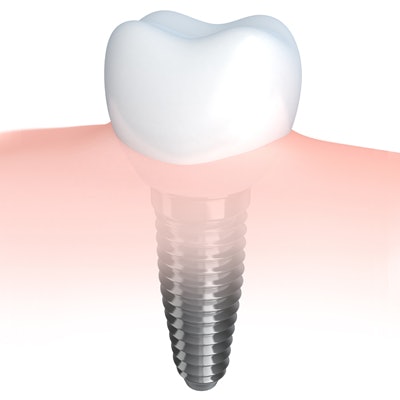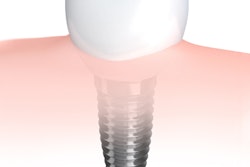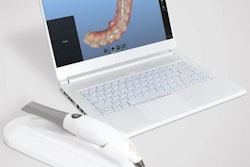
When it comes to implant placement, developments in computer‐guided dynamic navigation systems may offer dental students a new training approach. Researchers put one of these systems to the test to see if it could improve implant surgical training.
They enlisted 14 dental students in a pilot study using a 3D-printed model. The students quickly improved from the first attempt onward, the study authors reported in the European Journal of Dental Education (May 29, 2019).
"Computer-aided dynamic implant navigation systems can improve implant surgical training in novice populations," wrote the authors, led by Janina Golob Deeb, DDS, an associate professor in the department of periodontics at the Virginia Commonwealth University School of Dentistry in Richmond.
Dynamic
Dynamic navigation surgery allows the operator to visualize the osteotomy and implant site on a computer screen while preparing the site and placing an implant fixture. Previous studies have shown this technique to be accurate, but these studies included trained, experienced surgeons, the authors wrote. The researchers of the current study wanted to find out if a dynamic navigation technology could be used to prepare a dental student with no previous implant surgical experience to competently and accurately perform implant placement.
For the study, 14 dental students (seven female) with no implant placement experience were randomly assigned five implant placement attempts involving either three maxillary or four mandibular implants distributed in the anterior/posterior and left/right segments. 3D-printed maxillary and mandibular models were used in the study. An orientation was
done for all participants before their first attempt to explain how the research would be done, how the navigation system worked, and how to use implant surgical handpiece and drills. There was a one-week wash-out period between each attempt.
The students planned the placement using the Navident dynamic guidance system (ClaroNav). The researchers recorded operation time for each attempt and also horizontal, vertical, and angulation discrepancies between the planned and placed implant positions.
The students had a significant reduction in time from their first attempt to their second (10.6 minutes versus 7.6 minutes; adjusted p < 0.001) then plateaued, the researchers reported. Implants placed in the area of the maxillary left first molar took significantly longer than other sites (see table below), they found.
| Time to place implant by location | |
| Location | Estimated mean time (min.) |
| Maxillary left 1st molar | 9.51 |
| Maxillary right 1st molar | 8.24 |
| Mandibular left 1st molar | 8.14 |
| Mandibular right 2nd premolar | 7.52 |
| Mandibular left 2nd premolar | 7.45 |
| Mandibular right 1st molar | 7.41 |
| Maxillary central incisor | 7.19 |
Overall, 3D angulation (p < 0.001) and 2D vertical apex deviation (p = 0.014) improved with each attempt -- this is important because 3D angulation is arguably the best measure for overall accuracy, the authors wrote. However, changes in lateral 2D (p = 0.513) and overall 3D apex deviations (p = 0.784) were not statistically significant, they added.
Significant improvements
The authors noted that clinical scenarios could be more complex beyond just the accuracy of osteotomy. They also listed several limitations:
- This was a postexperimental survey.
- There was no traditional implant training control.
- The study included no prior information on possibly related dental student skills, such as computer gaming experience.
The researchers reported that these dental students improved significantly in speed and angulation deviation within the first three attempts of placing implants using dynamic navigation, which suggests these systems can be of benefit to more than just experienced surgeons.
"This study was perhaps one of the first to demonstrate that there was a clear learning curve in training novice implant surgeons using computer-guided implant navigation system," the authors wrote.



















